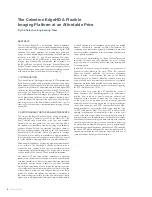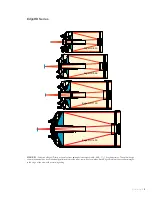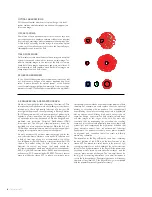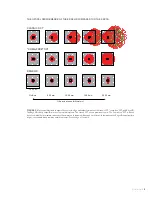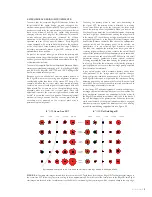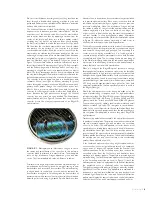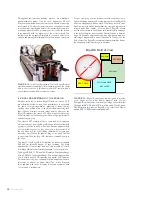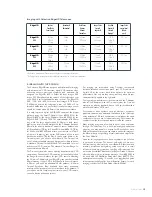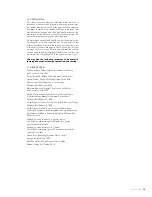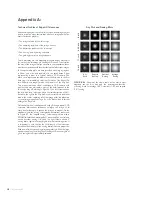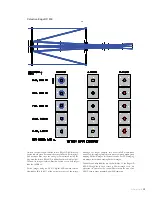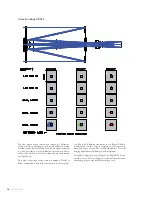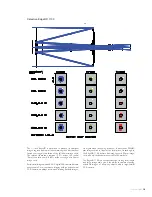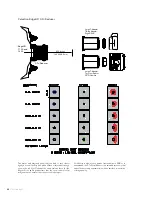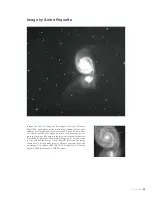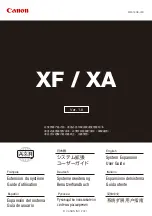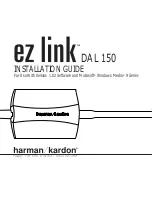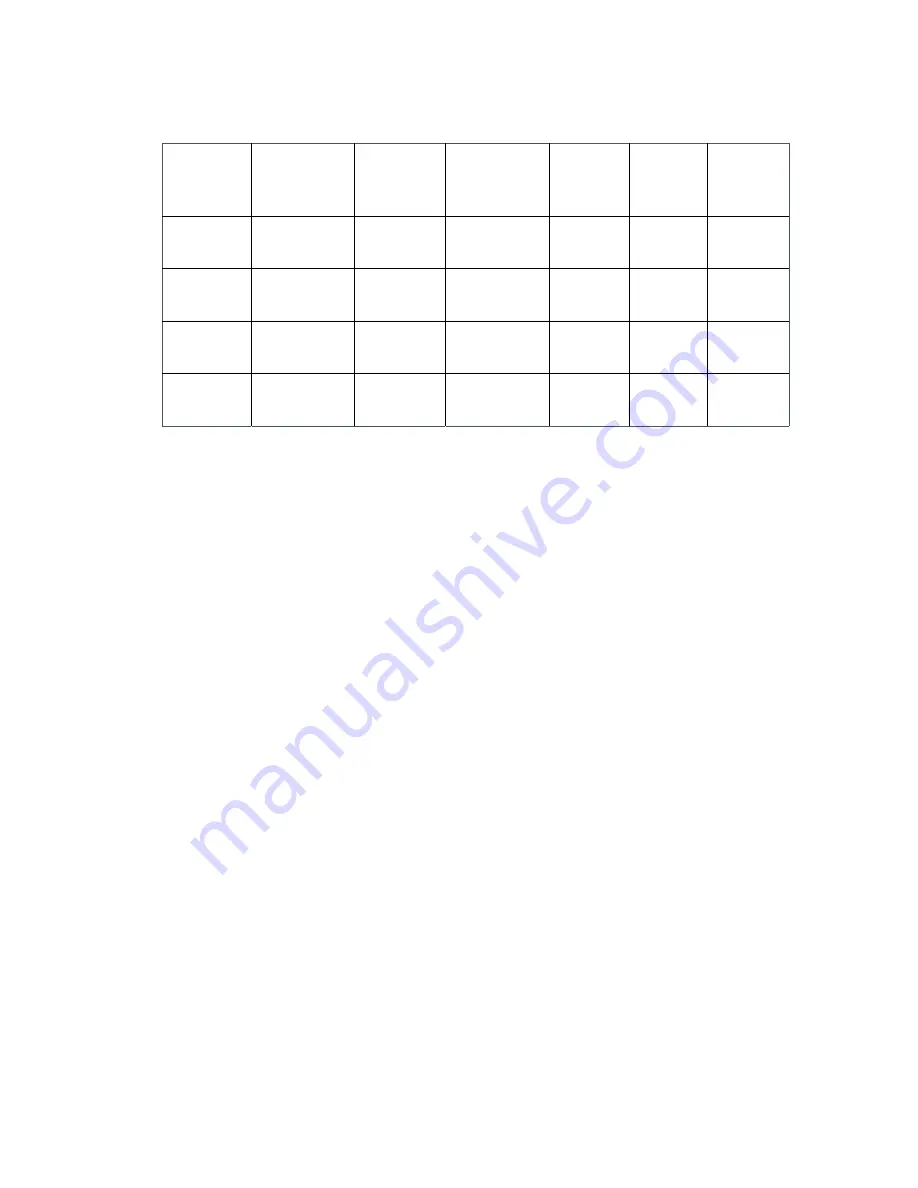
The Celestron EdgeHD
13
9. IMAGING WITH THE EDGEHD
The Celestron EdgeHD was designed and optimized for imaging
with astronomical CCD cameras, digital SLR cameras, video
astronomy sensors, electronic eyepieces, and webcams. We
designed the EdgeHD 800 to deliver the best images 5.25
inches (133.35mm) behind the surface of the telescope’s rear
cell 2.00×24 tpi threaded baffle tube lock nut. The EdgeHD
925, 1100, and 1400 form their best images 5.75 inches
(146.05mm) behind the telescope’s rear cell 3.290×16 tpi
threaded baffle tube lock nut. For best results, the image sensor
should be located within ±0.5mm of this back-focus distance.
It is easy to place a digital SLR (DSLR) camera at the proper
distance using the Small T-Adapter (item #93644) for the
EdgeHD 800, or the Large T-Adapter (item #93646) for the
EdgeHD 925, 1100, and 1400. The small adapter is 78.35mm
long while the large adapter adds 91.05mm, in both cases
placing the best focus 55mm behind the T-Adapter. Because
55mm is the industry standard T-mount to sensor distance, add
a T-Ring adapter (T-Ring for Canon EOS, item #93419; T-Ring
for Nikon, item #93402) and attach your camera to it. That’s
all there is to placing your digital SLR camera at the correct
back-focus location. (By the way, if you’ve never heard of the
T-mount system, you need to know about it. The T-mount is a
set of industry standard sizes and distances for camera lenses.
A standard T-mount thread (M42×0.75) is available for most
astronomical CCD cameras. The standard T-mount flange-to-
sensor distance is 55mm.)
The T-mount system also makes spacing an astronomical CCD
camera easy. Consult your CCD camera’s documentation to find
the flange-to-sensor distance for your CCD camera. Attaching
the Celestron T-Adapter to your EdgeHD gives you the standard
55mm spacing. If your CCD’s front flange-to-sensor distance
is 35mm, you need an additional 20mm distance. A 20mm
T-mount Extension Tube, available from many astronomy
retailers, will help you achieve the correct back focus distance. If
you require a more complex optical train for your CCD camera,
consult a trusted astronomy retailer.
For imaging, we recommend using T-system components
because threaded connections place your CCD camera or
digital SLR at the correct back focus distance for optimum
performance. Not only are they strong, but they also hold your
camera perfectly square to the light path.
To mount a high-performance video camera, add the T-Adapter
plus a T-to-C adapter. (Like the T-mount system, the C-mount
system is an industry standard. It uses 1×32 tpi threads with a
back-focus distance of17.5mm.)
For consumer video systems such as electronic eyepieces,
planetary cameras, and webcams that attach to the telescope
using a standard 1.25-inch eyepiece barrel, simply use the same
components that you use for visual observing. Just remove the
eyepiece from the telescope and replace it with the camera.
Many imaging programs allow you to shoot short exposures
through the telescope. On a solid, polar-aligned equatorial
mounting, you may be able to expose for 30 seconds or more.
With such exposure times, you can capture wonderful images of
the Moon, planets, eclipses, bright star clusters, and objects like
the Orion Nebula.
However, for long exposures on deep-sky objects, you will need
to guide the telescope. The days of guiding by eye are over;
electronic auto-guiders are the new standard. A functional and
relatively inexpensive autoguiding setup consists of a small
refractor mounted piggyback on your EdgeHD telescope. You
will need a dovetail bar attached to the EdgeHD tube. Celestron
offers an 80mm guide telescope package (item #52309) to
be used with the NexGuide Autoguider (item #93713). For
sub-exposures exceeding 10 minutes or so, piggybacked guide
telescopes potentially suffer from differential flexure; for such
imaging, consider the Off-Axis Guider (item #93648).
Imaging with Celestron EdgeHD Telescopes
EdgeHD
Aperture
Focal Ratio
Focal Length
Secondary Ø
Obstruction1
Back Focus
Distance
Adapter
Thread Size
Image Circle
Linear Ø
Angular Ø
Airy Disk
Angular Ø
Linear Ø
Rayleigh
2
Image Scale
arcsec/pixel
(6.4 μm
pixel)
EdgeHD
800
203.2mm
ƒ/10.456
2125mm
68.6mm
34 %
133.35mm
2.00”-24 tpi
42mm Ø
68.0 arcmin
1.36” Ø
14.0μm Ø
0.68”
0.62”/pix
EdgeHD
925
235mm
ƒ/9.878
2321mm
85.1mm
36%
146.05mm
3.29”-16 tpi
42mm Ø
62.2 arcmin
1.18” Ø
13.2μm Ø
0.59”
0.57”/pix
EdgeHD
1100
279.4mm
ƒ/9.978
2788mm
92.3mm
33%
146.05mm
3.29”-16 tpi
42mm Ø
51.8 arcmin
0.99” Ø
13.3μm Ø
0.50”
0.47”/pix
EdgeHD
1400
355.6mm
ƒ/10.846
3857mm
114.3mm
32%
146.05mm
3.29”-16 tpi
42mm Ø
37.4 arcmin
0.78” Ø
14.4μm Ø
0.39”
0.34”/pix
1.
The Ø symbol means diameter. Central obscuration is given as a percentage of the aperture.
2.
The Rayleigh Limit for resolving doubles with equally bright components. The “ symbol means arcseconds.


